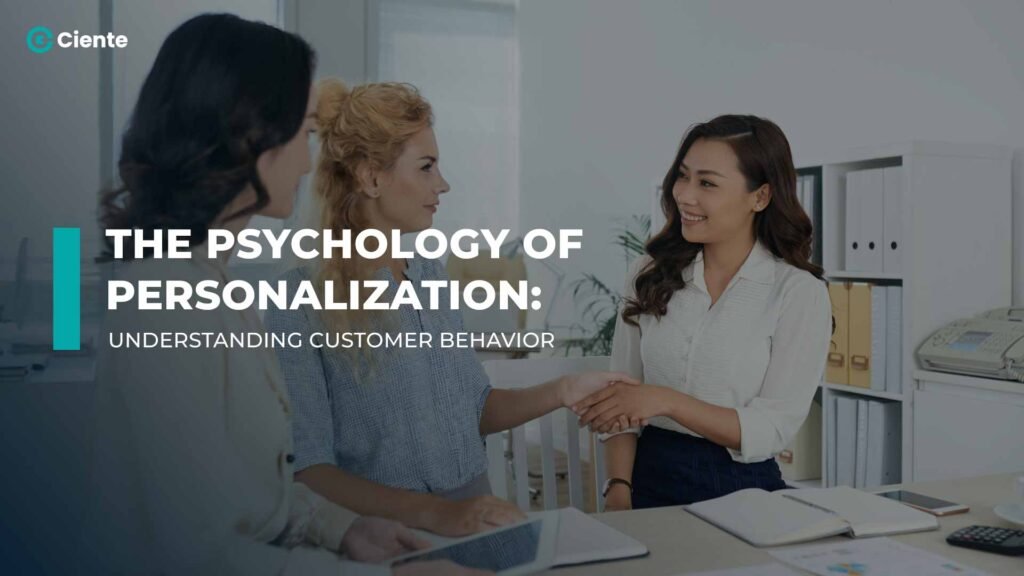Personalization is a balance between algorithmic insights and heartfelt connections. It delivers brand loyalty in a market that craves intimacy, not just relevance.
Personalization is when sellers use data to tailor messages to specific users. Personalization paints a picture of all good things – personalized messages, special discounts, customized recommendations, and handwritten gift cards are all just a short list.
But, there is a thin line between personalization and frustrating your prospects with unwanted messages. Brands that have mastered this skill are generating a higher ROI than their competitors.
At the end of this blog, you’ll know how to approach personalization for your business.
Personalization and Customer Experiences
Need for belonging and recognition: Imagine opening a mail and finding it addressed to someone else. You’ll be confused and frustrated, right?
Now, imagine receiving an email with your name and a special discount. You would be intrigued to interact with that brand.
That’s how personalization works. When done right, it makes the customer feel valued and understood. Hence turning them into your brand advocates and ultimately boosting your ROI.
The “Cocktail Party Effect”: You are surrounded by countless conversations at a bustling party. Yet, you can effortlessly focus on just one voice – let’s say, your friend’s. This remarkable ability, known as the “cocktail party effect,” exemplifies how our brain selectively filters information, prioritizing what’s relevant. In a crowded marketplace, this translates to attention. Consumers are bombarded with messages, but like party chatter, most fade into the background. Personalization highlights what matters to each individual, making their experience stand out.
Dopamine Rush and Anticipation: Typically, before a big purchase, people plan for it. Lucky for marketers, this is an opportunity for personalization. Many people believe that dopamine is released in response to a reward. However, it also surges in anticipation of a reward. This creates a cycle where a person sees a product and plans to buy it in the future. The anticipation of obtaining the product generates excitement and motivation, causing dopamine to spike. As the person gets closer to purchasing the product, the anticipation increases, resulting in a higher dopamine rush. This information can be useful for marketing teams who sell luxurious items.
Understanding Customer Behavior
Data-driven insights: To personalize user experience, data can be divided into three primary categories: purchase history, browsing behavior, and demographics. Purchase history provides information about the user’s past preferences while browsing behavior uncovers the user’s current interests. Demographics, such as age and location, provide a broader picture of the user. Combining these insights can help businesses tailor content, recommendations, and even entire experiences to individual users.
Psychological principles in action: A person doesn’t always purchase a product just because they need it. There are several factors influencing a purchase, such as:
- Emotional Triggers – Emotional triggers play a crucial role in shaping consumer behavior, as individuals often make purchasing decisions based on the emotions elicited by a product or service. Positive feelings such as joy, excitement, or a sense of belonging are powerful motivators for consumers. Advertisements strategically employ these emotional triggers to establish a deep connection between their brand and customers, capitalizing on their desires and aspirations.
- Social Influence – Social influence, rooted in humanity’s inherent social nature, significantly impacts decision-making processes. This influence can manifest through various channels, including peer recommendations, celebrity endorsements, online reviews, and social media trends. Businesses can capitalize on social influence by fostering a sense of community around their brand and encouraging customers to share positive experiences with others.
- Cognitive Bias – Cognitive biases, which are mental shortcuts or patterns affecting decision-making, also play a role in consumer behavior. For instance, the scarcity effect makes people perceive limited availability as more valuable, driving increased demand. Another bias is the anchoring effect, where individuals heavily rely on the first piece of information received when making a decision. Marketers can leverage these cognitive biases by framing their offerings to align with consumers’ cognitive tendencies.
Also Read : Technology For A Better CX
The personalization paradox: The personalization paradox is a tricky concept between relevance and creepiness. People crave recommendations that anticipate their needs but recoil when algorithms seem to know them too well. Striking the balance demands responsible data use and unwavering respect for privacy. Transparency, minimization, and accountability are essential to achieve this. Ultimately, personalization should empower, not control. When technology guides, not puppeteers, we discover serendipitous opportunities and a future where convenience respects boundaries and relevance nurtures autonomy.
Beyond the Algorithm
Personalization requires a human touch that builds emotional connections with customers. While AI can provide data-driven recommendations, the human thread remains vital in delivering personalized experiences that build long-term trust. Through heartfelt conversations, intuitive service, and creative interventions, we remind customers that behind the algorithm beats the warmth of a human heart. In this symphony of personalization, the human touch is the maestro, conducting data, technology, and emotion to create a masterpiece of loyalty.
Conclusion
Consumer behavior psychology can offer favorable insights into the reasons and factors influencing purchasing decisions. Brands can effectively connect with their target audience by understanding the emotional triggers, social dynamics, cognitive biases, and individual preferences that shape consumer behavior. By considering the psychological factors at play, businesses can build stronger relationships, enhance customer satisfaction, and drive business growth in a constantly changing market environment.

